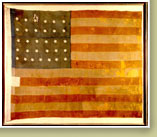After he received the post, Harris wished to learn more about the distant land he had been keen to visit ever since he had learned of Commodore Matthew Perrys expedition to Japan in the spring of 1853 while he was living in Hong Kong. The sources Harris was able to locate were extremely out-of-date. The most recent publication was the History of Japan by Englebert Kmpfer, published in 1690, so his view of this isolated people was somewhat limited, but that was soon to change after he landed in Shimoda in August 1856. All he knew about the Japanese form of government was that Japan was ruled by an emperor known as the Sh_gun who resided in Edo now Tokyo, who oversaw a network of feudal lords.
While Harris was sailing along the Japanese coast to land at Shimoda, he reflected on his arrival in his journal entry dated Tuesday, August 19, 1856:
We are to-day about seventy miles E. of the coast of Kyushu, but the water is like a desert, so far as man is concerned - not a ship, junk, boat, or craft of any kind is visible - and this too when near the coast of an empire more populous than the United States! What a contrast to the whirl of life on the opposite side of the Pacific! I shall be the first recognized agent from a civilized power to reside in Japan. This forms an epoch in my life and may be the beginning of a new order of things in Japan. I hope I may so conduct myself that I may have honorable mention in the histories which will be written on Japan and its future destiny.
Harris arrived in the coastal village of Shimoda, Japan, in August 1856 accompanied by his secretary and interpreter Henry Heusken (1832-1861). His first diplomatic achievement in this nation previously closed to all westerners was the Convention of Shimoda, approved in June 1857, establishing the right of American vessels to re-provision at the ports of Nagasaki, Shimoda, or Hakodate, Japan, using barter or currency.



